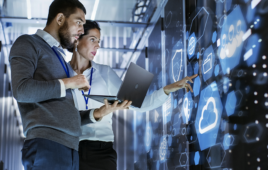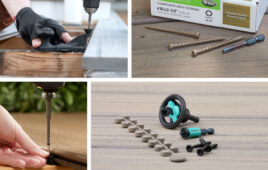Captive screws are fasteners designed to remain attached to guards or equipment. A conventional screw typically passes through a clearance hole in one part and then screws into a threaded hole in a second part — so the first part is clamped to the second. However, when the fastener is unscrewed from the threaded hole in the second component, it can easily separate from the first one.
 A captive screw is designed to prevent this from occurring. It can freely rotate within the first component, with some axial movement, but it’s unable to separate from it. Captive screws are used when fasteners must remain attached to equipment, such as in cover panels. They are a requirement for several machinery safety standards.
A captive screw is designed to prevent this from occurring. It can freely rotate within the first component, with some axial movement, but it’s unable to separate from it. Captive screws are used when fasteners must remain attached to equipment, such as in cover panels. They are a requirement for several machinery safety standards.
Captive screws have a normal thread and a reduced diameter for the rest of the screw length. A captive screw is usually used with a retaining washer or a retaining flange. These have a hole with a short-threaded length. The threaded portion of the captive screw is screwed through this hole until the reduced diameter can pass freely through it. The washer or flange is then captive on the screw.
To install a captive screw on a panel using a retaining washer, the screw is first passed through a hole in the panel. The washer is then screwed onto the captive screw, until the reduced diameter section is reached, retaining the screw on the panel. To install a captive screw using a retaining flange, the flange is first pressed onto the panel. The captive screw is then screwed into the flange until the reduced diameter section is reached and the screw is retained.
Other forms of captive screw are also available that have pre-fitted caps in place of a retaining washer or flange. These caps can be pressed, bonded, or screwed into the panel or equipment to which the screw is to be retained.





Tell Us What You Think!